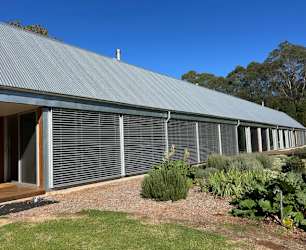Recently, several friends have moved out of the area because they don’t feel the quality of health care available as they age is good enough. Which makes me wonder what it means for a community not to have confidence in its local hospital – in our case, Wollongong.
We may hope to avoid a visit, but at some stage, many of us are likely to end up there, due to accident or illness. Some anecdotal reports are positive: I’ve heard great things about the fracture clinic, for example. But I have also heard respected health professionals say, “Unless it’s an emergency, get yourself driven in the opposite direction.” That is a damning indictment.
The public hospital at Wollongong has up to 500 beds. It has outgrown its site and looks tired. But of far greater concern than any cosmetic facelift is the quality of care. Some is outstanding, some is poor, but overall, it’s inconsistent.
Several medical specialisations are not available at all: a woman who went in with a pre-existing skin condition that flared during her stay, requiring urgent attention, was told there was no dermatologist on staff. Not a single doctor specialising in our largest organ, at a hospital that caters to a community from Stanwell Park to Milton? Not good enough, especially when a referral to an external specialist can take months.
I’ve also heard testimony of birth trauma and misdiagnosis.
The recorded message you listen to interminably when you call Illawarra and Shoalhaven Local Health District boasts that it is one of the largest employers in the region, responsible for the staffing of the hospitals at Shellharbour (which has a bad reputation, even among health workers), Bulli (where Urgent Care is a welcome option for minor injuries and customer satisfaction scores highly on social media) and transitional care at Coledale (a holding place for those waiting to transfer into nursing homes, which has a grim reputation compared with its sister ward at Figtree, providing no allied health care, poor quality food and no resources to keep residents stimulated during an often uncertain and anxious period of life).
My experience of contacting staff on an acute care ward at Wollongong, calling for an update about a family member, has been woeful: a formal complaint (a process that takes too long in eliciting a response) produced an acknowledgement that communication is an issue. Several months later, I noticed no improvement.
On the positive side, the deployment of non-clinical Patient Experience Officers has been trialled and shown good results in helping people navigate the byzantine systems of treatment. But there are just two PEOs at Wollongong; staff have told me they would like them to be available much more widely so that there are trained advocates on all wards to help patients and their families (especially those from other cultures) in times of stress and concern. If no one directs you to the Nursing Unit Manager (NUM) as your first point of reference, you can get lost in a Kafka-esque vortex.
Another factor that no one discusses is that when a hospital is in a safe seat, it’s unlikely to secure necessary increased funding. Promising a new or improved hospital is what parties do to entice constituents to change their vote. Just look at the new state-of-the art facility in Ryde, the most marginal electorate in NSW. We are at a disadvantage that shows no sign of changing soon. But health care is too important to be dependent on politics.
Wollongong is a regional hub, and a teaching hospital, but its standards are failing to meet community expectations.
Data collected in 2022/23 shows its Emergency Department is regarded as one of the worst in the state, scoring low on pain-management, waiting times and privacy. It can be very distressing waiting there, especially with the escalation of the ice epidemic.
At Wollongong ED, ice accounts for an average of two to three presentations per day and is a difficult and dangerous problem to manage. It ties up beds that could be used for other emergencies. But a separate dedicated unit would take up space and resources that don’t exist.
Across the hospital, burn-out among nurses is high and morale is low from the pressures of unsustainable workloads; former staff tell me they still have PTSD from experiences on the wards during the pandemic for which they never received adequate counselling. Shortages of personnel mean that a patient pressing a call button may not be attended to for hours. In this scenario, everyone suffers.
The gratitude we felt during Covid has to translate into improved work conditions to make a career in health care sustainable.
I want to age in the Illawarra but to do that, I need to know that my hospital is in better health than I would be going into it. It’s time for a thorough check-up, an honest diagnosis and a prescription for treatment.






